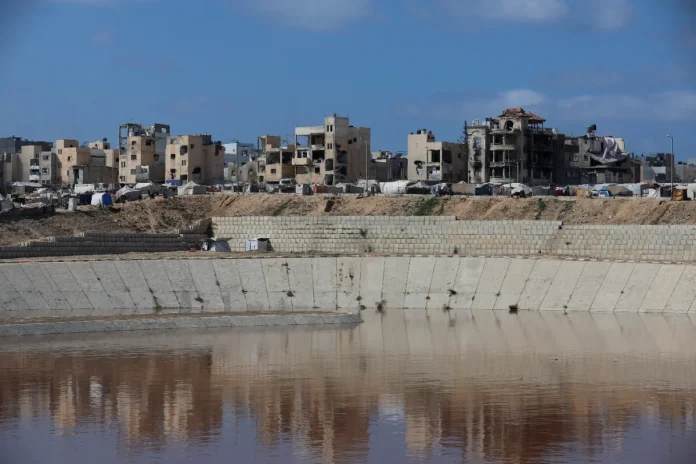UNDP warns of immense health and environmental risks from Gaza’s 2 million tons of untreated waste piling near tent camps, causing skin and gastric diseases.
KHAN YOUNIS (Gaza Strip): Stinking mounds of fly-covered garbage lie strewn throughout Gaza amid the rubble from Israel’s devastating military campaign, spilling out along roadsides and between the tents where most of the shattered enclave’s people live.
Government services such as rubbish collection ceased as soon as the war began and although they are partially returning since the truce last month, the massive extent of destruction means any more thorough cleanup lies far in the future.
“I don’t smell any fresh air. I smell a foul odour in my tent. I can’t sleep. My children wake up in the morning coughing,” said Mahmoud Abu Reida, gesturing at the dumpster by the tent he shares with his wife and four children in Khan Younis.
Rotting garbage, sewage-filled pools, hazardous waste from bomb sites and noxious smoke from burning cloth and plastic have birthed a fetid environment for Gazans.
ALSO READ: US circulates UN draft resolution backing Trump’s Gaza peace plan
“The scale of the waste problem in Gaza is huge,” said Alessandro Mrakic, head of the Gaza office of the U.N. development agency UNDP.
Waste landfill sites were already full before the start of the war and three major dump sites were located along the border with Israel in areas that are now off limits to Palestinians, he said.
“We’re talking about 2 million tons of waste – untreated – all across Gaza,” Mrakic said, adding that the risks to the environment, to the aquifer that much of Gaza’s water comes from, and to the population’s health were “immense”.
Many people complain of gastric diseases and skin complaints from diarrhoea to rashes, sores, lice and scabies, and doctors in the tiny, crowded Palestinian territory say pollution is to blame.
“Skin diseases have spread a lot because of overcrowding in tents and the tents are next to garbage dumps,” said Sami Abu Taha, a dermatologist at the Kuwaiti field hospital in Khan Younis, lamenting the lack of medicine to treat such ailments.
One of Abu Reida’s children has been repeatedly to the hospital, he said, where doctors had told him the boy was suffering from a bacterial infection that likely came from the rubbish container by the tent.
BOMBARDMENTS SMASH INFRASTRUCTURE
In another part of Khan Younis, Mahmoud Helles was sitting in his tent with his children – a sewage-filled pond standing nearby.
“We find nowhere to stay but in such places,” he said, showing a rash of red spots on his arm and hand.
“This place is very, very difficult – it is full of diseases and epidemics because of war remnants, piles of garbage, and the lack of sewage treatment,” he said.
Much of Gaza’s wastewater and sewage infrastructure was badly damaged by Israel’s bombardment and ground operations, leaving people to use open latrines that flood when it rains.
The United Nations is developing plans to deal with the waste problem, including considering options for processing plants that can generate electricity from waste, Mrakic said.
“Immediate action is needed, mainly through access of machinery, equipment, that will allow us to properly perform the job on the ground,” he added. – Reuters







